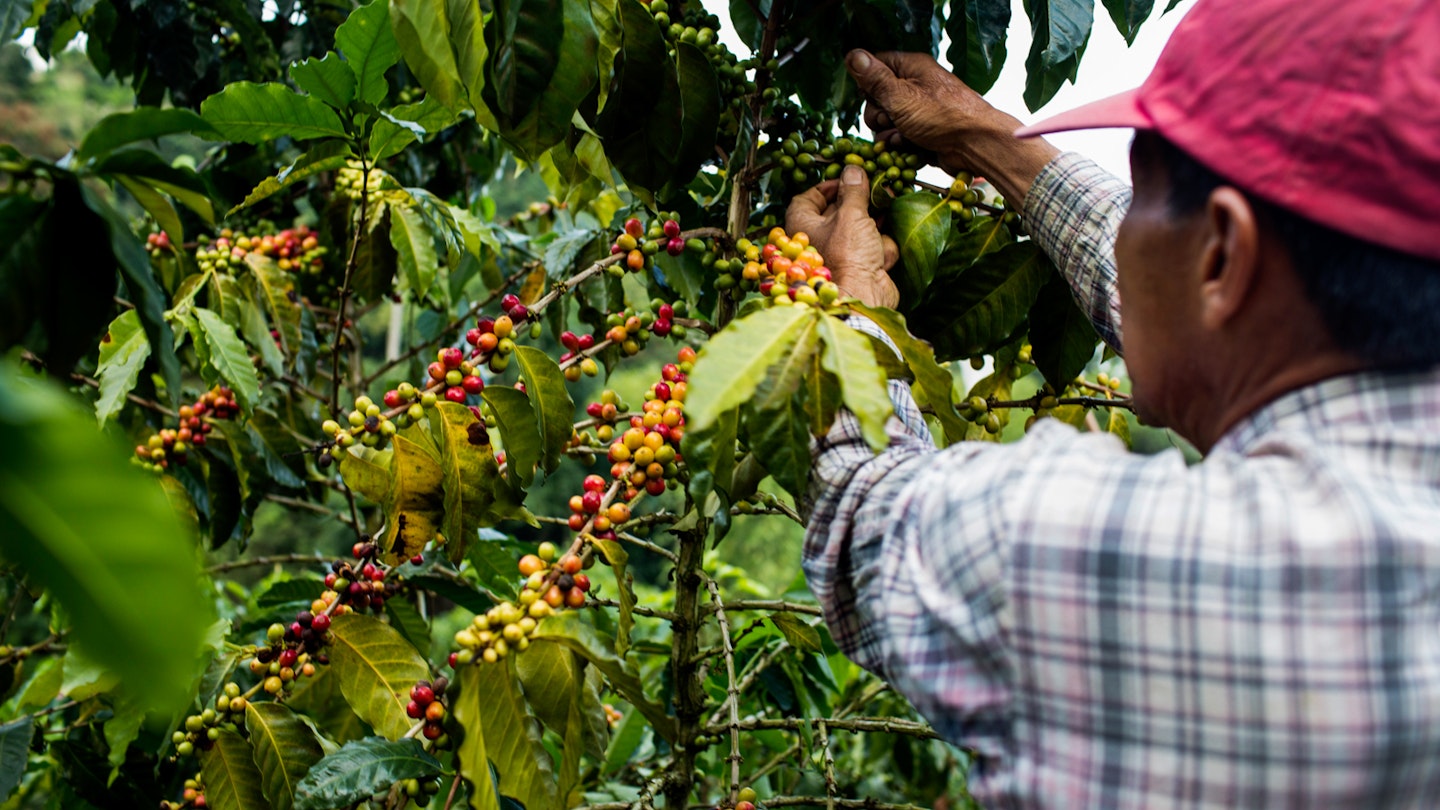Colombia’s Coffee Triangle: A Journey Through Flavor and Scenery
Few morning routines are complete without a vitalizing cup of coffee. If you’re a fan of mild, well-balanced beans, there’s a good chance the cup you’re drinking is Colombian coffee, produced in the country’s Coffee Triangle, also known as the Coffee Zone or Coffee Belt.
Tucked at the western end of the Ande Mountains, Colombia’s Coffee Triangle is one of the most biodiverse regions in the world and a UNESCO-designated World Heritage Site.
The region produces the most Arabica beans in the world and has the third-highest coffee production globally after Brazil and Vietnam. Historically, most of the country’s coffee has been exported; however, a growing appreciation among Colombia’s millennial population, along with an increase in domestic coffee tourism, has led to more coffee shops and plantation tours being offered throughout the area.
Colombia’s Coffee Triangle is home to some of the country’s most magnificent interior landscapes, minus the crowds typically found in big cities like Medellin or Cartagena. The region consists of three departments: Quindio, Risaralda, and Caldas, where the majority of the country’s coffee is produced.
Nestled within these departments are small towns where, despite the added dose of caffeine, life moves at a slower pace. There’s even a National Coffee theme park, complete with amusement rides, a coffee garden, coffee-themed food and drink, a museum detailing the history of coffee production in the region, and two gondola lifts providing views of coffee plantations below.
If you’re planning a trip to Colombia, it’s worthwhile to depart from the popular tourist track and put these coffee capitals on your itinerary.
Salento
Tucked behind verdant mountains less than an hour’s drive from Quindio’s capital, Armenia, is Salento, the most popular stop along Colombia’s coffee corridor. As one of the oldest towns in Quindio, Salento flaunts colorful Spanish architecture and a cobblestone central plaza where jeeps arrive every twenty minutes or so to take adventurous travelers to the nearby Cocora Valley.
The palms in Cocora Valley are the tallest in the world and one of the reasons why Salento has emerged as a favorite coffee capital in Colombia. Coffee plantation tours, horseback rides, and local hikes also draw tourists to this destination. Plan your trip during the week to avoid crowds.
Manizales
Located at the northern edge of Colombia’s Eje Cafetero, or coffee axis, is Manizales, the mid-sized capital of the Caldas department. Bordered by mountains on all sides, Manizales promotes plenty of nature activities and a growing nightlife scene. Travelers can stay on coffee farms, go bird-watching in nearby cloud forests, or take in the picturesque valley on a cable car ride.
In the first week of January, the town hosts their annual Feria de Manizales, inspired by both Spanish and Colombian traditions. Celebrations include parades, live music, traditional dances, food, as well as the controversial sport of bullfighting.
Pijao
Often bypassed by travelers, the humble town of Pijao is tucked within the Quindio department. Only 19km outside of Armenia, Pijao boasts a unique culture inspired by the slow travel movement, which encourages travelers to savor local experiences.
Pijao is frequently described as a smaller, calmer version of Salento; however, this does not mean that the town lacks attractions to impress visitors. In addition to coffee farm tours, outdoor enthusiasts can appreciate hiking local waterfalls and rafting on the nearby Rio de la Vieja. If you visit in September, don’t miss the chance to sample local flavors at their Coffee, Food, and Cultural Festival.
Calarcá
Located just outside of Armenia is the charming town of Calarcá, a budding hotspot for ecotourism. Local cliffs offer opportunities for rock climbing and rappelling, alongside stunning waterfall hikes. A visit to the nearby botanical garden and butterfly farm, home to 1,200 species of butterflies native to Colombia, is a must.
Every year, Calarcá hosts a National Coffee Festival where tourists can taste different beans and participate in a Yipao parade, celebrating the Jeeps (or Willys) that farmers rely on for transporting cargo. ‘Yipao’ refers to a fully-loaded Willy, and during the parade, locals pile their possessions before driving them down the main streets. The festival typically occurs in June or July.
Fillandia
If neighboring Salento proves too packed for your taste, head to Fillandia to enjoy similar amenities without the crowds. The town’s lookout provides stunning views of the Cauca River Valley, and on a clear day, one can see the cities of Pereira and Armenia in the distance. Fillandia is home to Helena Adentro, one of the most acclaimed restaurants in the Coffee Triangle, offering a changing menu with seasonal ingredients.
Jeep rides to the Cocora Valley are a popular excursion from Fillandia, or you can rent a bike for a self-guided tour of the local coffee plantations. Ask locals about the rumored double waterfall; although this natural wonder sits on private land, the owners are often happy to share it with passing tourists.





